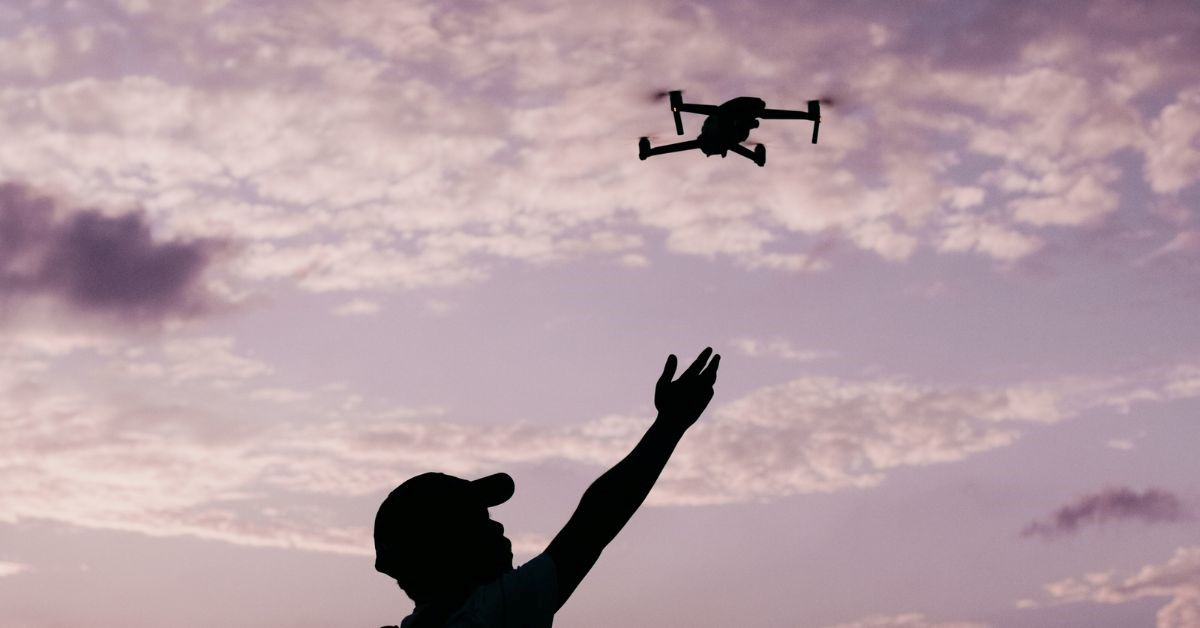Get To Know More about UAV Technology Supporting Aerial Task Operations

Technological innovations have been a crucial part of modernization and globalization in today. It has aided different industries in enhancing jobs and services. And one of the crucial procedures most industries have been dealing with is getting aerial information. Aircraft and satellite imaging are innovative solutions that help industries make the said procedure possible in a much more efficient and convenient way.
This article discusses UAVs, an innovation for advancing specific essential aerial tasks.
What is UAVs?
UAVs are aircraft that have no pilot on board. It can operate autonomously or remote-controlled. Unmanned aerial vehicles equip actual payloads such as cameras, radar, sensors, etc. Its UAV tech has data system supports, like GPS tracker and wireless connectivity, allowing its components to work together from afar.
What does UAV stand for?
The abbreviated UAV means unmanned aerial vehicle. The A in UAV stands for ‘aerial,’ but it is pilot-less once deployed. UAVs are generally known for being steered remotely. But with its continuous advancement, some UAVs are now either human-supervised, semi-autonomous, or autonomous.
Drone vs. UAVs: What are the Differences?
Drones and UAVs are both unscrewed aerial vehicles. Both machines can fly remotely or autonomously. Meanwhile, the drone and UAV canvas, function, and applications are not far different. However, drone technology or just “drone” is the mainstream term for the said aerial machine. On the other hand, it is usual in government and military contexts to use the word “UAV” on the unscrewed aerial vehicle used for surveillance and scouting.
The term is also more specific, and professionals in the UAV industries prefer using it on official documentation and press papers. In addition, some professionals in the said industry also stand that UAVs need autonomous flight capabilities while drones do not.
Is a quadcopter a UAV?
Besides the term drone and UAV, it is also confusing whether a quadcopter is a UAV. A quadcopter is another piece of UAV. It is also identical to drone technology, but what makes it identifiable is its four rotors. Quadcopters are usually for recreational and commercial usage. However, it is typically smaller than usual commercial and military UAVs. Regardless of that, the quadcopter can fall under UAV as they are one of its types.
Why are drones called UAVs?
“Drone” is the mainstream term for an unscrewed aerial vehicle. Compared to UAV, it is the term known to general consumers. But usually, this term is used for commercial and hobbyist users. While the government and military often used the word “UAV.” With the functionality and its features, both terms are interchangeable.
However, in the drone industry, some professionals see that UAVs need autonomous flight capabilities while drones do not. Hence, UAVs is a drones, while not all drones are UAVs. Nevertheless, the drone industry continuously advances, whereas some UAVs already have human-supervised, semi-autonomous, or autonomous features. Hence, some call the UAV a drone or just a UAV drone.
What makes a drone different from other aircraft?
The primary difference between drones and other aircraft is that they are aerial vehicles with no pilot needed on board, while most aircraft need it. Drones have sophisticated and advanced technology that allows them to fly independently and work for different purposes. Drones are also smaller compared to usual aircraft. Also, aircraft are commonly aerial vehicles for transport, while drones are for various operations like autonomous surveillance, mapping, tracking, and more.
What are the functions of UAVs beneficial to military use?
UAVs are known for their history of being a part of military usage, especially during the Cold War. And until now, UAVs have been used for surveillance intelligence of government and army camps for their missions. It also helps in combat and situational assessment. Over time, the UAV has also continuously advanced and increased its capabilities, from an organic UAV to a shadow UAV, and other upgrades that enhance its strategic and operational usage. These UAVs have also aided military troupes in reconnaissance and battlefield monitoring to fulfill missions.
What is the use of UAVs?
With the advancement of the UAV, its usage has also grown, catering to different industries. This technology can perform aerial surveillance, inspection, monitoring, tracking, and terrain mapping for planning for various business purposes. Besides its government and military utilization, commercial sectors also use its advantages for enhanced data collection. It assists multiple work applications such as aerial assessment, media content, payload delivery, reaching remote areas, emergency and rescue, and more.
Get to Know the 5 Benefits of Drone Technology
With the fast-growing world, UAVs stock continues to increase as it becomes an essential machine for different organizations. So for that, here are the five general benefits of drone technology
1: Surveillance and Inspections.
One of the benefits of using drone technology is it allows industries to have efficient aerial overlook, especially for businesses that involve extensive areas. For instance, checking warehouses takes much force and time. But with UAV utility inspections, a job like that can shorten the duration and reduce the workforce without messing with the work result.
2: Aerial Photography and Videography.
Another popular benefit of investing in drone technology is allowing industries to take aerial footage. It substitutes renting satellite imaging and helicopters in doing so. Also, it is more accessible, especially for media practitioners and rescuers, to deploy anytime.
3: Generating Topographical Mapping.
Drone solutions support industries like construction, architecture, property management, and mapping. It helps many sectors to access an overview perspective that will guide them in creating 2D and 3D maps. Urbanization and vast land assessment can be more effective through it.
4: Tracking and Monitoring.
Besides the ability to survey an area, drones are also effective in aerial monitoring. In the weather forecasting industry, drones are one of the machines that help track weather conditions. Its multispectral sensors gather specific data. At the same time, drone tracking is possible through its sensors, where users can secure their properties from unwanted situations.
5: Transport Service.
Some industries are already benefitting from drone delivery and shipping. It allows businesses to reach wide consumers and even reach remote areas. Meanwhile, this drone transport also helps rescuers send immediate help during disasters.
With this list of expected benefits of using drone technology, it is no wonder that UAVs stock news is firm, as it supports different industries. And for that, here are the UAV features to consider for purchase:
- Framework – ensure a sturdy body framing, propellers, and composition so that it can endure any atmospheric impacts.
- VTOL Function – get an advanced vertical take-off and landing (VTOL) function, like a stream C UAV or any type that can hover steadily.
- Multispectral Sensors – UAVs with excellent sensors can ensure efficacy in aerial data gathering.
- Flexible Payloads – UAVs that allow flexible payloads aid different industries as operators can utilize them according to their needs.
- Flight Duration – featuring automatic charging and a long-lasting battery guarantees a less uninterrupted flight.
ZenaDrone 1000: UAV Drone for Advanced Aerial Surveillance Operations
The ZenaDrone 1000 is suitable for advanced aerial surveillance if you consider a UAV investment. The ZenaDrone 1000 is a drone technology with excellent features such as a durable carbon fiber body, integration of AI that aids multi-industries, multispectral sensors, a long-lasting battery, high-quality imaging functions, and more.
The ZenaDrone 1000 caters to the benefits mentioned earlier and features that various industries can experience. It is one of the exceptional UAVs that can aid in autonomous and effective aerial operations. To learn more about it, visit us now
Contact Us
Thank you for your message. It has been sent.
Latest Posts
Social Profiles















